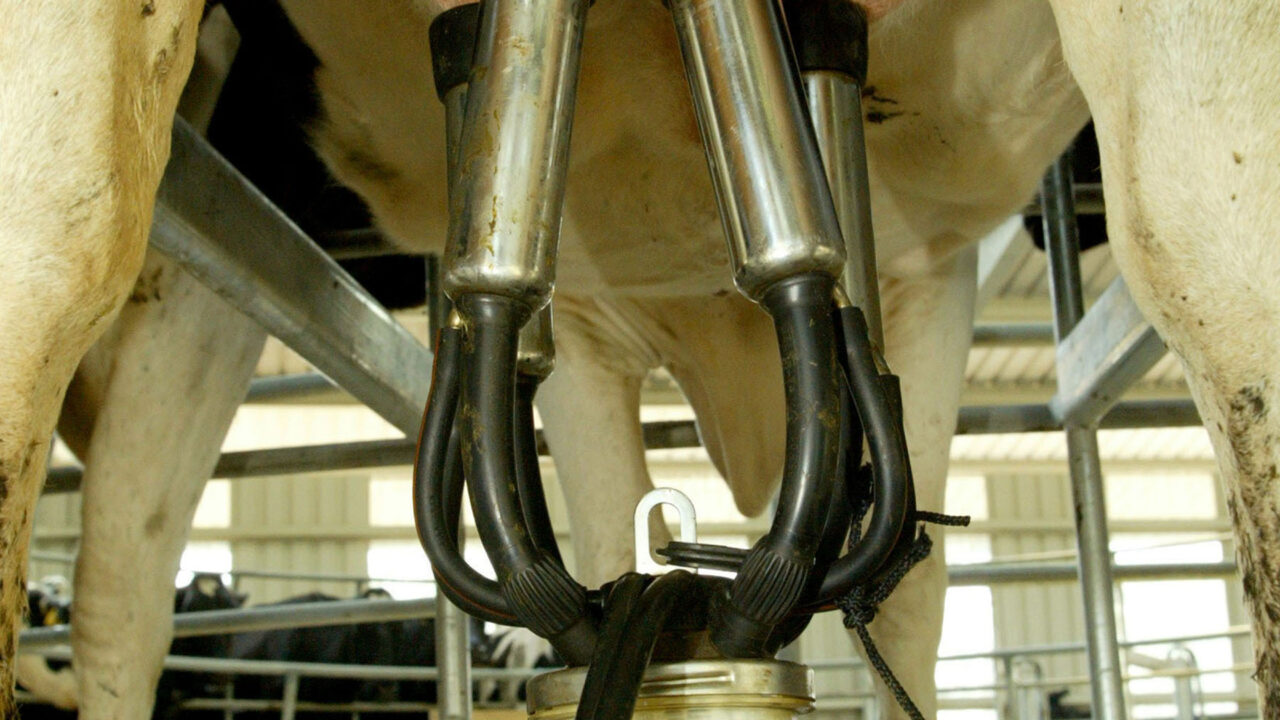It might seem counterintuitive, but veterinary experts say it is possible to increase mastitis cure rates while also lowering antibiotic use.
In just two years, Norman Beggs managed to slash the antibiotic use at drying off by 75% on a Northern Irish farm – while also reducing the percentage of chronically-infected cows from 12.8% to 4.7%.
Beggs said research had shown previously uninfected cows treated with antibiotics at drying off are 12 times more likely to go down with E. coli mastitis in the following lactation.
Speaking at the annual agricultural symposium at Queen’s University Belfast, Beggs said he became involved in the herd in June 2017.
The state of play
At that time the herd’s bulk milk somatic cell count was 147,000 – a figure which indicated between 10% and 20% of the herd was infected at any one time.
“In the late 1960s, when the five-point mastitis control plan was introduced, the average bulk milk somatic cell count was 400,000 – and that meant that approximately half of the cows in the herd were infected at that time,” he said.
So the advice which was issued then of blanket dry cow therapy – to every cow at drying off – was relevant, because at least half of the cows were infected at any one time and were likely to be infected at drying off.
“In this particular herd, the problem was 56 cases / 100 cows / year – and the relevance of that is that an achievable target is less than 25 cases / 100 cows / year; so there was a very high rate of clinical mastitis cases in this herd.”
Beggs said the stock-keeper had to cull three cows due to mastitis the month before he was called and added that milkings on the farm had become stressful.
Getting to the root of the problem
Through his investigations, he identified that non-chlorinated borehole water used to wash udders before the cows were milked had been a source of infection.
Particular attention was paid to the net transmission index – a measure of the rate at which cows have become infected over the last month compared to the rate at which cows have been cured of mastitis.
If the rate is greater than ‘1.0’ that means more cows have become infected than have been cured; if it’s less than ‘1.0’ that means more cows have been cured than have become infected and udder health is therefore improving.
Before the programme started, the transmission index during lactation was very high at 11.5. The dry period was also much higher than the target level; sitting at around three times the target rate.
Beggs also discovered another problem in the calving pens. Just one of the calving pens – the one with the worst ventilation – had been fitted with a camera.
As a result, this pen was used much more frequently compared to the other two and the quick turnaround meant there were times when the pen had not been properly cleaned.
Beggs encouraged the farmer to use all the pens equally and to ensure that they were cleaned between cows. He also recommended cleaning and bedding the dry cow cubicles more frequently.
Reducing infection to reduce treatment
The dry period cure rate 12 months prior to Beggs’s involvement was 75% and, after two years of his advice, it was 92.9%.
During that period, the level of antibiotics used was significantly reduced – something Beggs put down to selective dry cow therapy and better hygiene practices which discouraged new infections from setting in.
In the first year of the programme, half of the cows received antibiotics and teat sealant at drying off – while the other half were just given teat sealant.
The following year this was halved again – just a quarter of the cows received antibiotics.
Within two years, all of the most significant key performance indicators were within their targets.
The lactation period’s infection rate was 2.6% and the dry period infection rate was 9.7% – just below the target of 10%.
By January 2018, the lactation infection rate had further improved to 0.9% and the dry cow new infection rate hit 0%.

